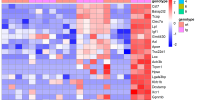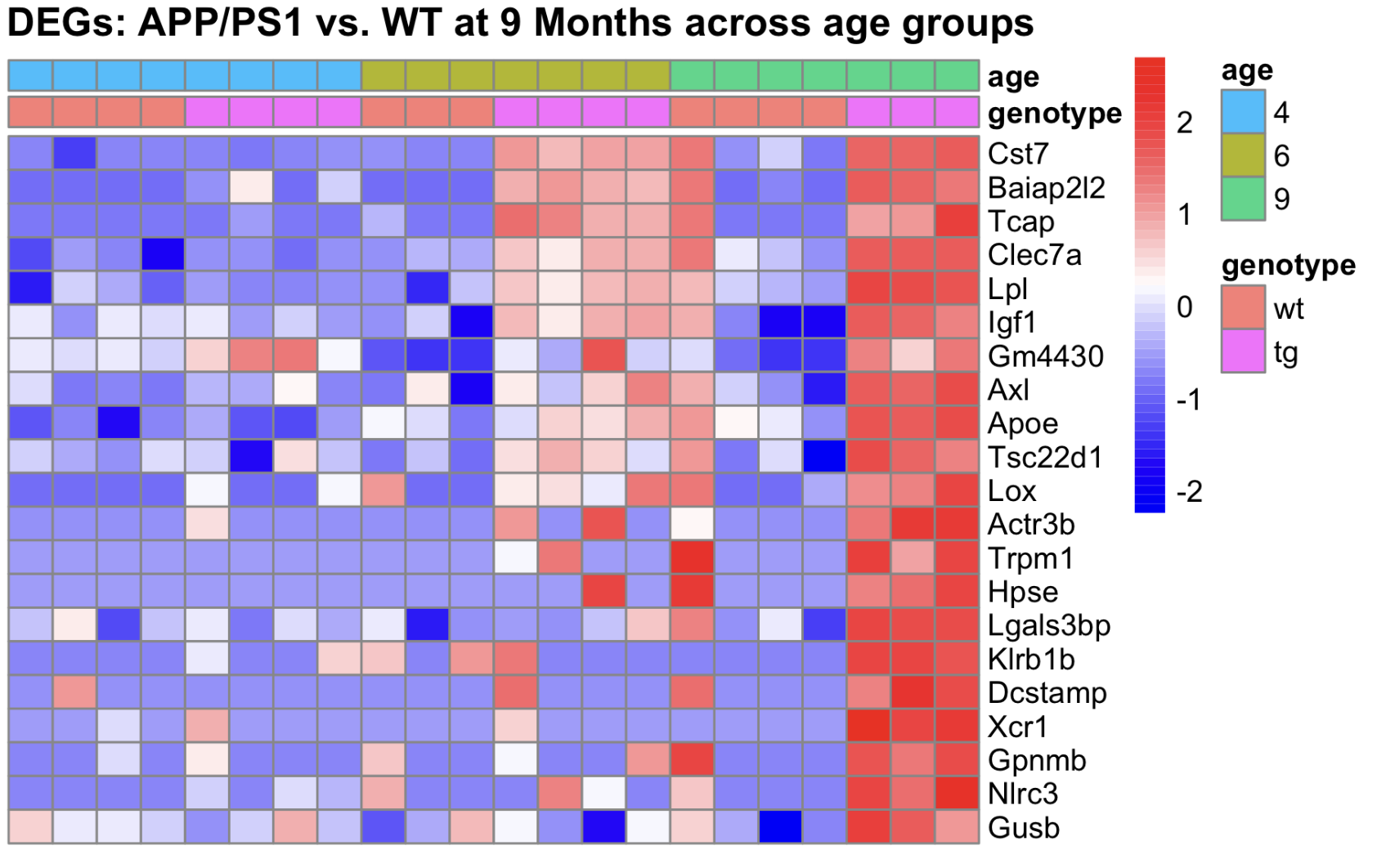
Accelerating Insights: Reproducing Early Transcriptional Changes in Alzheimer’s Research
Unlock early Alzheimer’s clues in minutes. aimed analytics transforms raw APP/PS1 transcriptomes into vivid heatmaps that spotlight genes like Cst7 and Baiap2l2—zero code, maximum insight.
Our LLM-backed, fully automated omics analysis platform transforms raw transcriptomic data into powerful visual insights without requiring any coding expertise. In a recent use case, the platform replicated key findings from the study “Early amyloid‐induced changes in microglia gene expression in male APP/PS1 mice” (Journal of Neuroscience Research | JNR Neuroscience Journal | Wiley Online Library) demonstrating its efficiency, reproducibility, and ease of use in capturing early transcriptional changes critical for Alzheimer’s research.
KEY CHALLENGES IN THE BIOLOGICAL AREA
Complexity of Early Biomarker Detection: Early transcriptional changes, such as those triggered by amyloid‑β deposition, are subtle and require sensitive, precise methods for detection.
Time-Consuming Data Analysis: Traditional bioinformatics approaches often demand extensive coding and long analysis times.
Reproducibility Concerns: Ensuring consistent and reproducible results across different labs and datasets is a persistent challenge.
ADVANTAGES
Our LLM-backed, automated analysis platform overcomes these challenges by:
Streamlining Analysis: Researchers can simply upload raw data and choose the appropriate module, eliminating manual coding.
Rapid Insights: The platform swiftly produces comprehensive, reproducible visualizations such as heatmaps, enabling quick validation of hypotheses.
User-Friendly Interface: Its intuitive design caters to scientists from various backgrounds—allowing both bioinformaticians and bench scientists to extract actionable insights effortlessly.

USE CASE
a. Context
In a recent study, researchers observed early microglial responses to amyloid‑β deposition using the APP/PS1 mouse model. Our platform was employed to replicate these findings, specifically from the publication “Early amyloid‐induced changes in microglia gene expression in male APP/PS1 mice.”
b. Analytical Steps
Data Upload: Raw transcriptomic datasets were uploaded to the platform.
Phrase Question: We asked in the chat area, which genes were differentially expressed.
Parameter Configuration: Analysis parameters were set to capture early changes, including selecting control vs. APP/PS1 sample groups.
Visualization: The generated heatmap clearly highlighted differentially expressed genes.
c. Outcome
The analysis—see Figure —reveals a clear differential gene expression pattern between control (wt) and APP/PS1 (tg) samples. Notably, our heatmap highlights the significant upregulation of Cst7 and Baiap2l2 at 6 months. These genes, linked to phagocytosis, lipid metabolism (Cst7), and vesicle formation (Baiap2l2), serve as early biomarkers of microglial activation in response to amyloid‑β. This early response is critical, as it lays the foundation for the subsequent development of disease-associated microglia (DAM) that emerge at later stages.
PRACTICAL BENEFITS FOR ORGANIZATIONS AND RESEARCHERS
Time Efficiency: Drastically reduces analysis time from hours/days to minutes.
Resource Savings: Eliminates the need for costly, specialized coding expertise.
Actionable Insights: Provides immediate, visually engaging outputs that help in hypothesis testing and decision making.
Scalability: Easily handles large omics datasets, facilitating routine high-throughput analyses.
TIME TO GET STARTED
Experience the future of omics data analysis today. Upload your raw datasets, select your analysis module, and instantly visualize complex transcriptional changes—all in one user-friendly platform.
Get started now—no coding required!
CONCLUSION
Our automated, LLM-backed omics analysis solution transforms complex raw data into clear, reproducible insights. By faithfully replicating early transcriptional changes in Alzheimer’s research, it empowers researchers to accelerate discoveries and make data-driven decisions with confidence.
WANT TO LEARN MORE?
Ready to unlock the hidden potential of your omics data?
Try our demo now or contact our team for a personalized walkthrough.